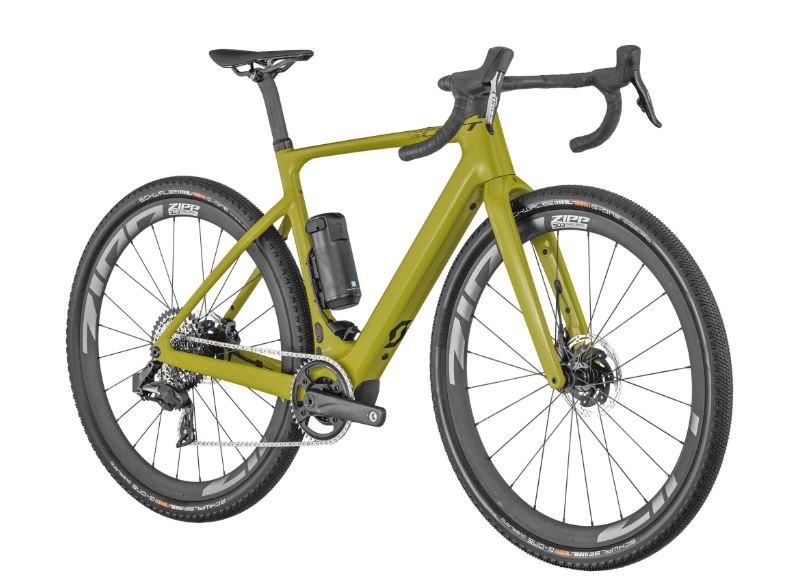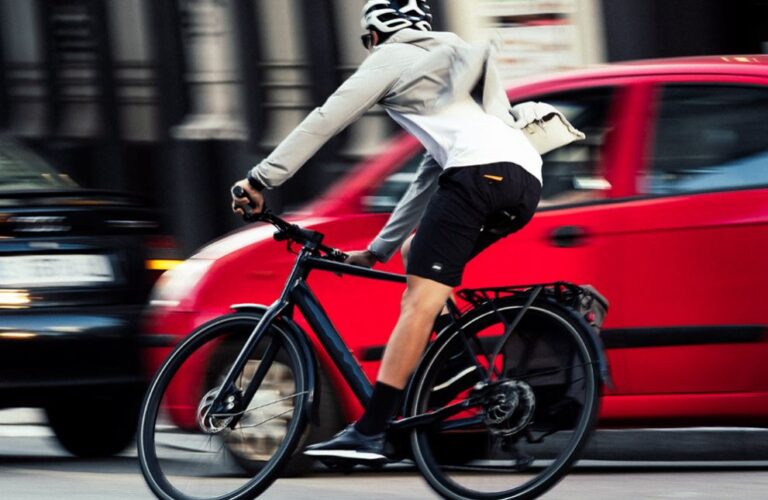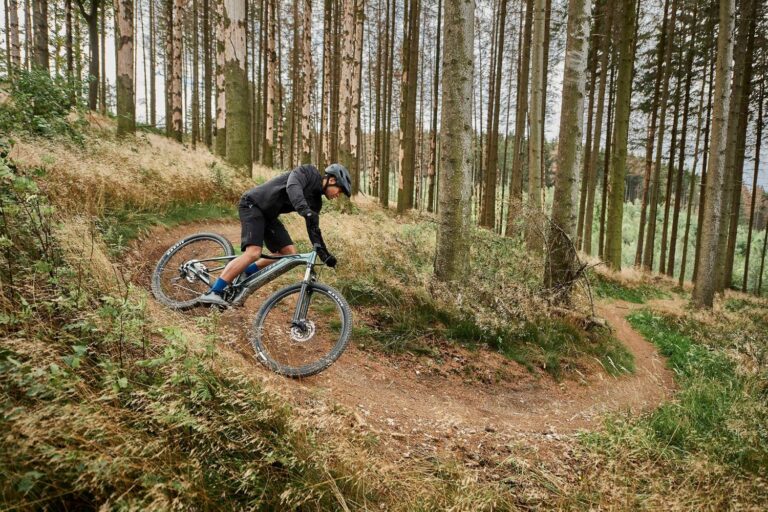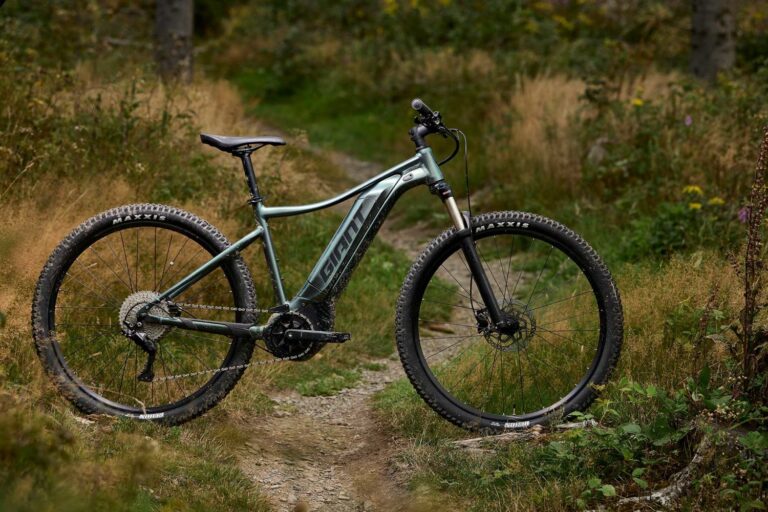Gravel eBike Buyers Guide

I’ve never ridden a Gravel eBike, but they look like fun. Gravel eBikes provide the versatility of gravel bikes with the added benefit of electric assistance. Whether tackling long gravel roads, commuting, or simply embarking on weekend adventures, a gravel eBike can be transformative. This Gravel eBike Buyers Guide will help you navigate your purchase:
1. Purpose and Riding Style:
- Determine if you’re leaning more towards commuting, adventure, or a blend of both. Your primary use will influence the features you prioritize.
2. Motor Type & Position:
- Mid-Drive: Situated at the bike’s bottom bracket, it offers a balanced weight distribution, often has better torque, and feels more intuitive during pedaling.
- Hub Drive: Found in the wheel hub, these are frequently quieter and may be less costly but can lack the torque or natural feel of mid-drives.
3. Battery:
- Focus on Capacity & Range: Depending on how far you plan to ride on one charge, consider the battery’s size. Bigger batteries give more range but also add weight.
- Decide between Removable vs. Integrated: While removable batteries simplify charging, integrated ones lend a more streamlined design.
4. Weight:
- Gravel eBikes tend to be heavier due to the motor and battery. Consider this aspect, especially if you need to transport the bike frequently.
5. Mounts:
- Look for multiple mounting points if you’re planning multi-day adventures or commuting. This allows attachment of cargo racks, fenders, and other accessories.
6. Pedaling Efficiency:
- The motor’s responsiveness to your pedaling can make a significant difference. Systems that adjust smoothly with your pedaling effort offer a more natural riding experience.
7. Design:
- This covers aesthetics, frame material (aluminum, carbon, steel), and geometry. Each material has its advantages concerning weight, durability, and ride feel. My advice is to go with carbon if you can afford it.
8. Suspension and Dampening:
- Some gravel eBikes come with front suspension, which can add comfort on rough terrains. Dampening systems help absorb shocks and smooth out rides.
9. Handling:
- Gravel eBikes should offer stable handling, especially on loose or rocky terrains. Test ride if possible to ensure it feels intuitive and confidence-inspiring.
10. Wheel Size & Tires:
- Wider tires offer stability on varied terrains. At least 35mm width is recommended, but many prefer 40mm or wider. Also, consider the wheel diameter—700c is common, but 650b is an alternative for a more cushioned ride.
11. Gearing:
- Think about your terrain. A wider range of gears is useful for hilly areas.
12. Brakes:
- Hydraulic Disc Brakes: Offer superior stopping power.
- Mechanical Disc Brakes: Easier to maintain but may lack the performance of hydraulic brakes.
13. Price & Warranty:
- Set a budget and ensure a comprehensive warranty that covers the bike and electronic components.
14. Brand Reputation & Reviews:
- Research the brand, look into customer feedback, and consider after-sales service.
- Click here to see the Best Gravel eBikes Rated and Ranked
15. List of Gravel Bike Manufacturers
Trek
By understanding and prioritizing these features, you’ll be better equipped to select the perfect gravel eBike for your needs. I hope you found this Gravel eBike Buyers Guide helpful! John
FAQ’s
Is an electric gravel bike worth it?
Whether an electric gravel bike is worth it depends on your specific needs, preferences, and circumstances. Here’s a breakdown of the considerations:
Advantages of an Electric Gravel Bike:
- Assistance on Tough Terrain: Gravel roads can be challenging, especially if they involve climbs. The electric assist can help you power through tougher terrains without getting as fatigued.
- Increased Range: If you want to go on longer rides without tiring out, an electric assist can help. You can cover more distance with the same amount of effort.
- Inclusivity: Riders of varying fitness levels can ride together. A less fit rider can keep up with a more fit rider, making group rides more enjoyable.
- Commuting: If you use your gravel bike for commuting and your route involves both city streets and off-road terrains, the electric assist can ensure you arrive at your destination without being overly sweaty or exhausted.
- Rehabilitation: For individuals recovering from injuries or with limited physical capabilities, an e-gravel bike offers a way to enjoy off-road adventures without overexerting.
Disadvantages or Considerations:
- Weight: Electric bikes are generally heavier than their non-electric counterparts due to the battery and motor. This can be noticeable when you’re lifting the bike or when the battery is depleted, and you’re pedaling without assistance.
- Cost: Electric gravel bikes are more expensive than regular gravel bikes. The initial investment and potential future battery replacements add to the cost.
- Maintenance: While e-bikes have become more reliable, they do have additional components that might need maintenance or replacement, such as the battery, motor, and electronic controls.
- Battery Life: Depending on the model and usage, you might find yourself limited by battery life, especially on longer rides. However, newer models tend to offer decent battery ranges.
- Traditionalist Perspective: Some cyclists prefer the purity and challenge of riding without assistance. They may feel that an e-bike takes away from the authentic experience.
Conclusion: If you believe the benefits align with your cycling goals and needs, then an electric gravel bike can be a worthwhile investment. If you’re looking for a more traditional cycling experience, or if the added cost and weight are deterrents, then a regular gravel bike might be more your speed. Before making a decision, it’s a good idea to test ride an e-gravel bike to see if it meets your expectations and feels right for you.
Why buy a gravel eBike?
Buying a gravel eBike combines the versatility of gravel biking with the assistance of electric power. Here are the main reasons one might consider buying a gravel eBike:
- Expanded Range and Endurance: The electric assist allows riders to cover longer distances with less fatigue, making it possible to explore further or simply enjoy longer rides without feeling overly exhausted.
- Climbing Assistance: Gravel roads often come with challenging terrains, including steep climbs. The e-assist provides additional power on ascents, making uphill sections more manageable and less strenuous.
- Versatility: Gravel bikes are known for their versatility, capable of handling a mix of terrains, from tarmac to trails. The electric assist further enhances this, letting riders tackle a broader range of terrains with confidence.
- Commuting: For those using their bike for commuting, a gravel eBike offers a practical solution. It can handle both city streets and off-road paths, and the electric assist ensures you arrive at work or home less sweaty and tired, especially over longer distances.
- Inclusive Riding: Electric assistance can level the playing field in group rides. If riders have different fitness levels, the e-assist allows everyone to ride together more easily, as it can help less fit riders keep up.
- Recovery and Rehabilitation: For individuals recovering from injuries or those who might not have the stamina for longer rides, an eBike offers a way to still enjoy cycling without overexerting themselves.
- Environmental Benefits: Using an eBike for commuting or errands can reduce carbon emissions if it replaces car trips. Even with the environmental costs of producing and charging batteries, eBikes are generally more eco-friendly than cars, especially for short trips.
- Economic Savings: While the initial investment in an eBike can be high, over time, it can result in savings, especially if it reduces the number of car trips or eliminates the need for a second car.
- Fun Factor: Many people find that the added boost from an electric motor simply makes cycling more fun, allowing them to enjoy the thrill of speed and the breeze in a way that’s different from traditional biking.
Considerations Before Buying:
While there are many advantages, it’s essential to consider factors like the higher initial cost, potential battery replacement costs, and the added weight of the motor and battery. It might be a good idea to test ride several models before deciding to ensure the bike suits your needs and preferences.
Are Ebikes good on gravel roads?
Yes, eBikes can be quite effective on gravel roads, especially when specifically designed for that terrain. Here’s why eBikes can be good on gravel and some considerations to keep in mind:
Advantages of eBikes on Gravel Roads:
- Assistance on Challenging Terrains: Gravel roads can be uneven, have loose surfaces, and involve climbs. The electric assist helps riders power through these challenges without becoming overly fatigued.
- Stability: The added weight from the battery and motor can give an eBike a lower center of gravity, which can provide additional stability on loose gravel surfaces.
- Versatility: Many gravel-specific eBikes are designed to handle a mix of terrains, from paved roads to trails. The electric assist makes transitioning between these terrains seamless.
- Tire Options: Gravel eBikes typically accommodate wider tires, which offer better traction and stability on gravel and off-road terrains.
- Extended Range: The electric assist can allow riders to explore longer gravel paths or even multi-terrain routes without worrying as much about endurance.
Considerations for eBikes on Gravel Roads:
- Weight: eBikes are generally heavier than non-electric bikes. While this can offer stability, it might make the bike harder to maneuver in tight spots or lift over obstacles.
- Battery Life: Riding on gravel, especially if it involves a lot of uphill sections, might consume battery power faster than riding on smooth paved roads. It’s essential to plan rides considering battery range and terrain.
- Maintenance: Gravel can be tough on bikes. The combination of dust, small rocks, and mud can lead to increased wear and tear. An eBike has more components than a standard bike, so there’s potentially more that can require maintenance. Regular cleaning and check-ups are crucial.
- Cost: eBikes, especially those designed for gravel, can be more expensive than traditional gravel bikes. This initial investment might be a consideration for some.
- Skill Level: While eBikes can make gravel riding more accessible, it’s still essential to have the necessary skills to navigate safely. Riding on loose surfaces requires techniques like weight shifting and controlled braking.
Conclusion:
While eBikes can be excellent on gravel roads, it’s essential to choose a model specifically designed for gravel or mixed-terrain use. With the right bike and regular maintenance, an eBike can provide a versatile, enjoyable, and efficient way to explore gravel roads and trails.





